When choosing a diamond, the first things you will need to decide upon are the cut (shape) and your budget. If you’re opting for a white diamond, there are four things a good jeweller will discuss with you when giving you your stone options, collectively known as the Four C’s.
But before we go into these four characteristics, you’ll need to understand the anatomy of a diamond. No matter what shape the stone is, the terms we use to describe different parts of the stone remain the same.
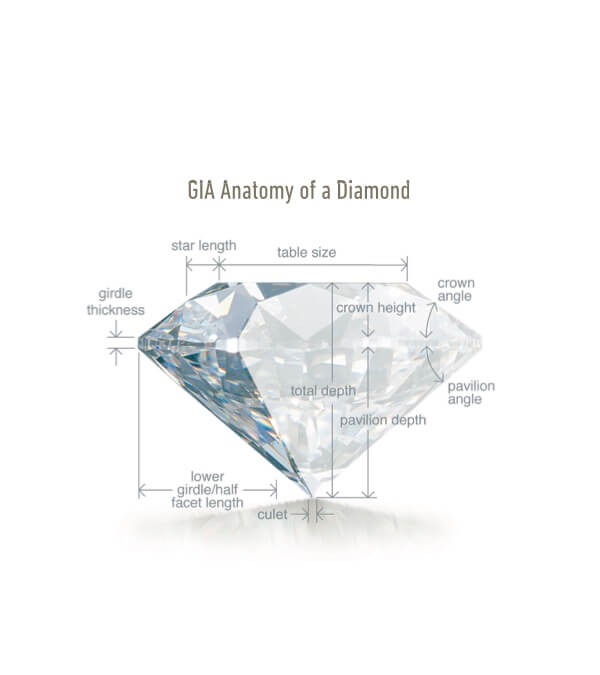
The major components or section of a diamond are:
- The table: This is the large, flat facet on the top of the stone.
- From the top to the bottom on the side view of a diamond are the crown, girdle and pavillion.
- A brilliant cut diamond has 57 or 58 facets. On a 58 facet diamond, the cutlet is a tiny flat facet the point at which all the facets meet at the base of the stone.
The 4 C’s
Read on for information about the carat, colour, clarity, and cut so you can feel confident that you are making the right choice for you. So that you can understand the jewellery jargon, I have broken these down into laymen’s terms to help you feel confident with your choice of stone.
Carat
I’ve chosen to start with carat as it is one that most people have heard of in terms of diamonds but few truly understand the meaning of it. The carat refers to the weight of the diamond rather that its size as many people think. If you’ve read my previous blogs on precious metals, gold is discussed in terms of carat too but this is about its’ level of purity rarely than weight as it is in gemstones.
One carat is equivalent to a fifth of a gram. It can be divided into “points”, where one point is equal to 0.01 carat. There are industry standards for the dimensions of each shape of diamond at each weight but it is not an exact science. There are other factors that can affect the dimensions of a diamond, which we will come onto in this post. The key message is to not rely on carat weight alone to work out the visual size of a stone.
You might assume that a 0.5ct diamond would be half the size (edge to edge from the top, table view) of a 1ct diamond. However, the difference in size in a round, brilliant cut diamond between a 1ct diamond and a half carat diamond is only 1.35mm (1ct = 6.5mm and 0.5mm = 5.2mm).
The setting style and colour of metal the stone is set in can play visual tricks with the eye as to how large a stone is. The shape of the stone can also make a stone appear a larger carat weight; longer shapes such as marquise or pear are slimmer at their points so the weight is spread out over a larger surface area.
The reason carat is an important factor is mainly because it is how diamonds are priced – £ per ct, so for example, if a stone weighted 0.44ct, and it’s cost was £675 per ct, it would cost £297.
As a general rule, the higher the carat weight, the higher price. It is easiest to compare stones by their price by carat weight; this is found by multiplying the stone’s carat weight by the price per carat. The heavier stones will have a higher price by carat weight and the reason for this is simply a case of supply and demand. Larger diamonds are much more scarce and, therefore, demand a higher premium. Because of this, the pattern of price against carat weight is not a straight line. So for example, a 2ct stone price per carat is not likely to be exactly double that of a 1ct stone – it is likely to be more than that!
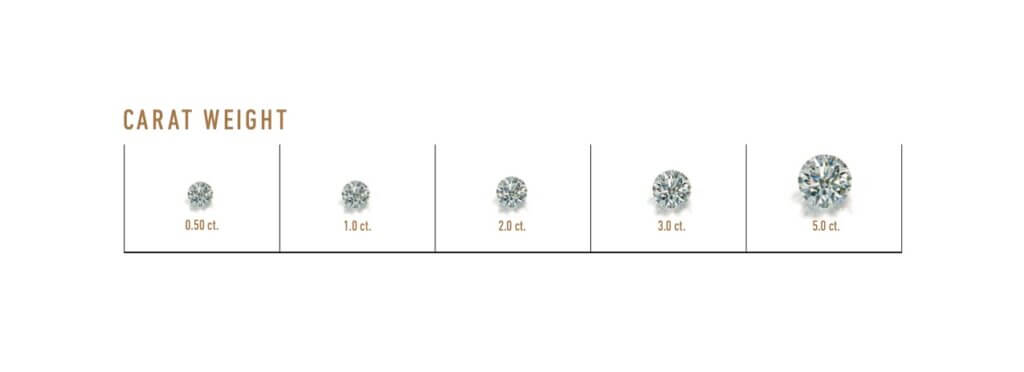
When I talk to clients about stones in their jewellery, diamonds or not, I tend to discuss them in mm measurement rather than carat. This is because the appearance is more relevant in terms of how the piece looks than the weight of the stone. There is a bit of a preoccupation with carat weight, probably because the media hypes up the carat weight of celebrity engagement rings. I recently stumbled upon a scary example of this in an article that compared the carat weight and value of various celebrities’ first and second marriage engagement rings! Surely the proportion of the stone in comparison to the wearer’s hand, the balance of the design and the affordability of the piece are more important factors than the weight of the stone to the every day person?
Colour
The next aspect of choosing a diamond is the most simple to understand. When talking about a diamond, the colour refers to how colourless or ‘white’ a stone is. Most jewellers use the GIA colour scale that uses an alphabetical scale from D to Z. ‘D’ represents truly colourless diamonds, which are very rare and the most desirable and so attract the highest price tags. As you travel through the scale closer to Z, you’ll find a greater presence of colour (yellow or brown). Most jewellers will use colourless to near colourless diamonds.
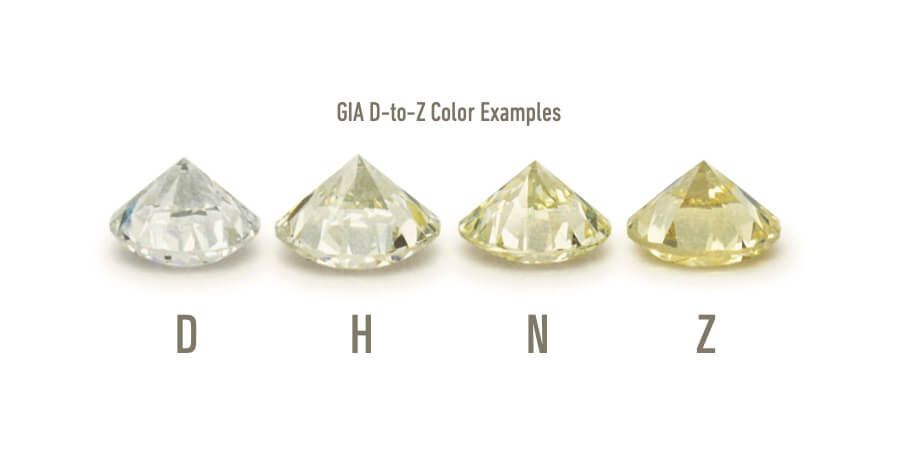
Most of these colour distinctions are only visible to the trained eye and when compared side by side. In reality, stones as far down the scale as H or I will appear white in isolation. Lower down the scale, you will start to notice a hint of yellow, especially when the stone is set in white metal as it will contrast in tone. If you have multiple diamonds in a piece, it is important to match the colours with each other so they work cohesively together. The colour of a diamond can be a good area to compromise when working within a budget as the setting style and metal colour can greatly affect the visual interpretation of the colour.
Before the GIA devised this D-Z grading system, other systems existed but were inconsistent. These included letters of the alphabet starting at A, with multiple A’s describing the best stones. Other grading systems have included Roman numerals or numbers. The GIA wanted to disassociate from these inaccurate systems and so devised this current system starting with D rather than A, as it is not a letter normally associated with top quality. The number of levels between D and Z makes it easy to accurately grade a diamond.
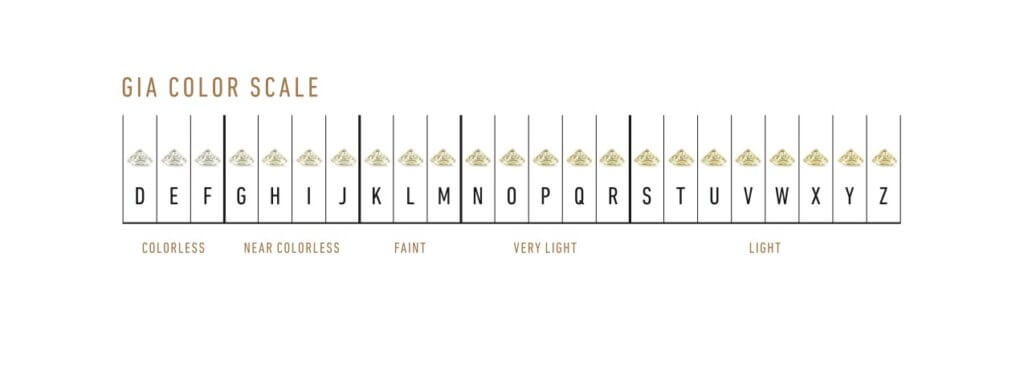
When I am pricing up a design using diamonds, I usually start with G or H colour as a guide for my clients. If budget allows, we can go up the scale, or to bring a piece down in cost, we can go down the scale.
Clarity
The clarity of the diamond can have a real impact on its sparkle. The fire and brilliance of a diamond are created through the reflection and refraction of light through the facet pattern. This is also affected by the cut of the diamond, which I will discuss in more detail later in this post. Any visible inclusions in the stone can affect the movement of light within the stone and can even sometimes be seen by the naked eye, which can spoil the appearance of the stone.
Because diamonds are natural items formed deep within the Earth under great pressure and heat, truly flawless diamonds are extremely rare. This means that most jewellers have never seen a truly flawless diamond. Diamonds will all usually include inclusions (inside the stone) or external blemishes. What matters is how the imperfections affect the appearance of the diamond and how the light reacts inside it. These can be in the form of dark carbon or light mineral deposits or even the more whimsical-sounding feathers, which are cracks within the structure of the stone. These cracks only affect the durability if the cracks reach the surface of the stone.
Below are some illustrations demonstrating how the inclusions might appear and their associated gradings:
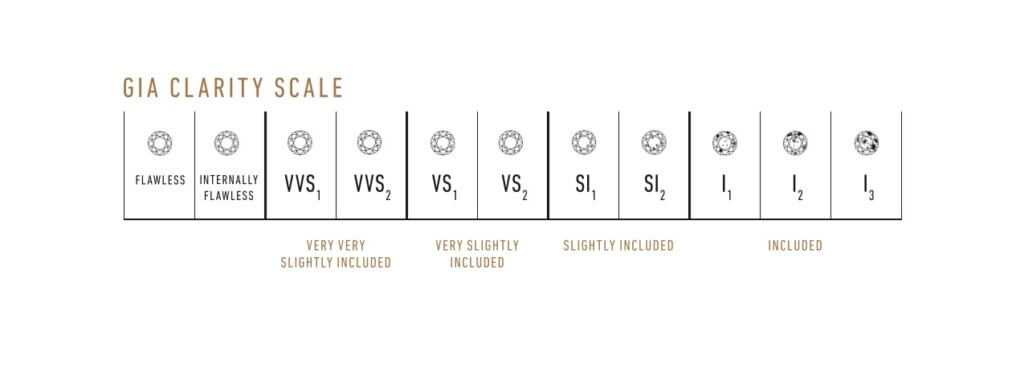
The GIA have come up with a grading system that most jewellers adhere to because it makes the grading system really clear. In fact, the names they have chosen to describe each grading are almost comically foolproof. The further to the left on the scale, the more value the stone is.
When searching for diamonds for my client’s pieces, I often start with SI or VS clarity, and just like with colour, this can be adjusted according to budget. Most importantly, I always look to source a number of stones so that my customers have a choice to see in the flesh. It may be that a diamond with a ‘lower’ clarity might actually have more fire and life in real life despite being a ‘lesser’ diamond on paper.
Cut
The cut does not refer to the stones shape in this instance. Instead, it refers to the symmetry of the stone and the way in which it has been cut and polished; the cut is key to a diamonds fire and brilliance. A well-cut stone will bounce the light around in an even pattern and will reflect the majority of the light back out the top of the stone. A poorly cut stone will lose light out the base and sides of the stone and therefore it will not be as fiery as a well cut stone.
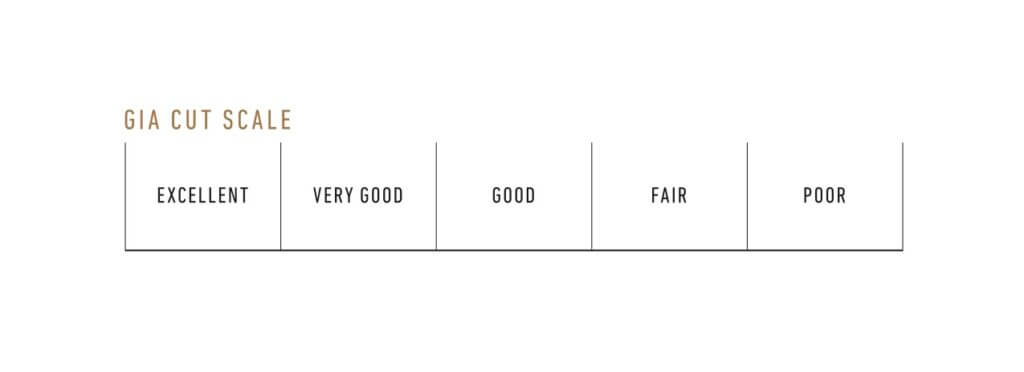
The proportions of a diamond refer to the ratio difference between the table size, crown angle and pavillion depth. A wide range of proportion combinations are created and these measurements will be decided when the stone is cut to get the most out of the raw diamond possible. These infinite possibilities have a knock on effect on the mm measurements of the diamond in terms of size and so this is why the carat rating is not the ideal method when choosing the size of a diamond. The visual measurements are far more important that the weight measurement.
The cut of the diamond is by far the most important of the 4 C’s – get the cut right, and the diamond will sparkle beautifully.

The overall cost of a diamond is a balancing act between these four categories. You need to prioritise the aspects that matter to you and balance the grading in each of the 4 C’s in order to shortlist a choice of diamonds. Once you’ve got your shortlist, you’ll see that even diamonds that on paper are the same, e.g. 0.5ct G VS2 Ideal cut stones, will not look the same in real life. The beauty of diamonds is that they are all unique and have individual properties that simply cannot be quantified onto a certificate.
To conclude, regardless of what your jeweller says, the two most important considerations when choosing a stone are:
a) Do you like it? When you look at it, does it sparkle in a way that pleases you? Diamonds should bring a smile to your face when you see them, so does your chosen stone have this effect on you? Just because a diamond has the ideal colour, cut, clarity and carat does not mean that it will be the most beautiful stone. You might even find that a ‘technically lower quantity diamond’ has more fire and is more appealing to you. Diamonds are a natural product – each is unique and every stone will have a life of its own that cannot be fully measured in quantifiable scales. Therefore, I would never recommend that you buy a stone online without seeing it.
b) Can you afford it? Have you been coerced into buying a costly stone because its credentials look good on a certificate? Going back to point A, what matters is your response to the stone in real life. It is not a black and white matter when it comes to fire and brilliance.
All images supplied by the GIA

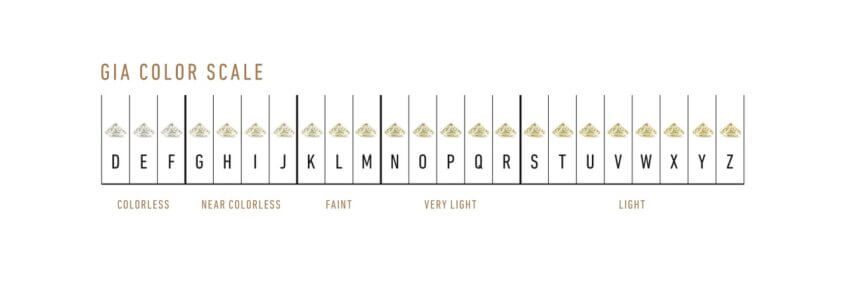
One Comment on “Diamond Education: The 4 C’s”
Agreed